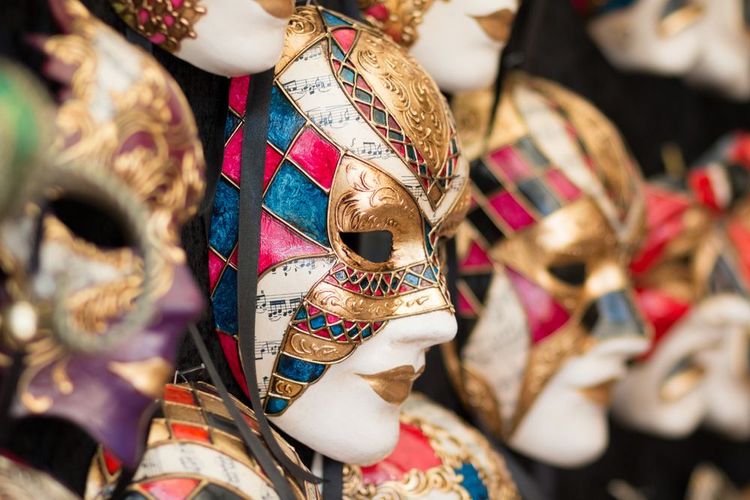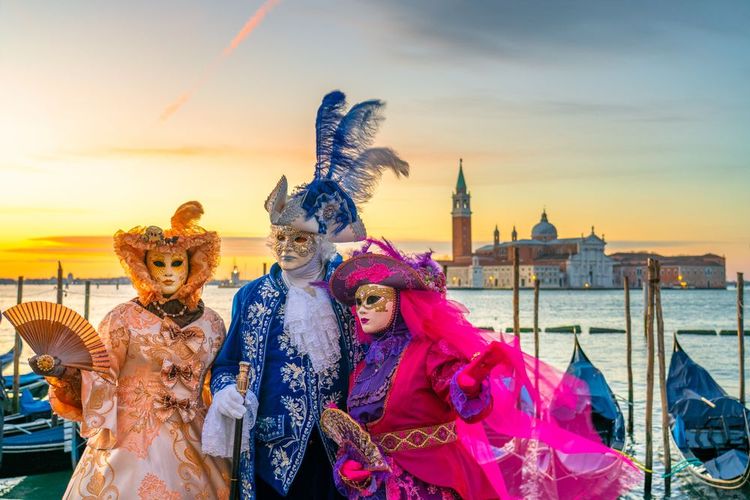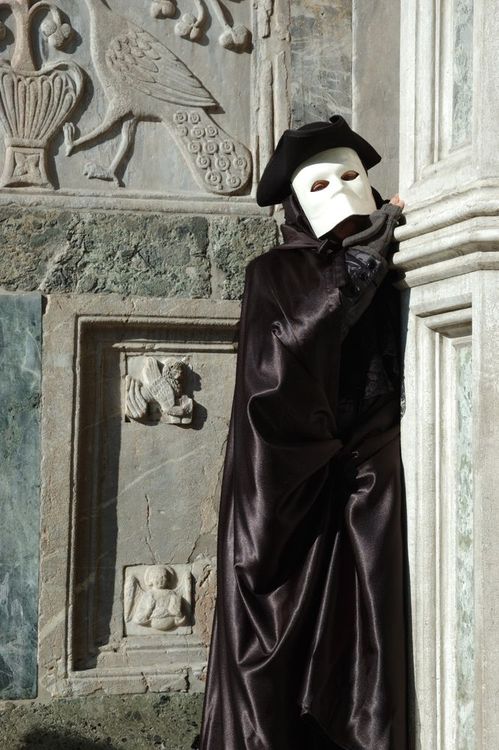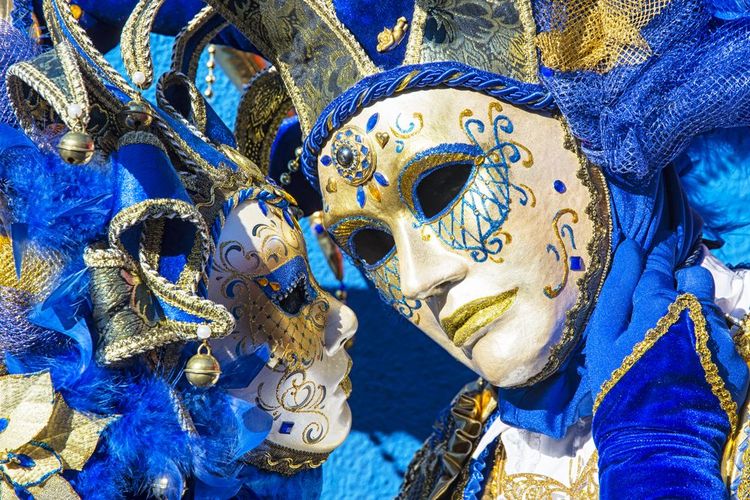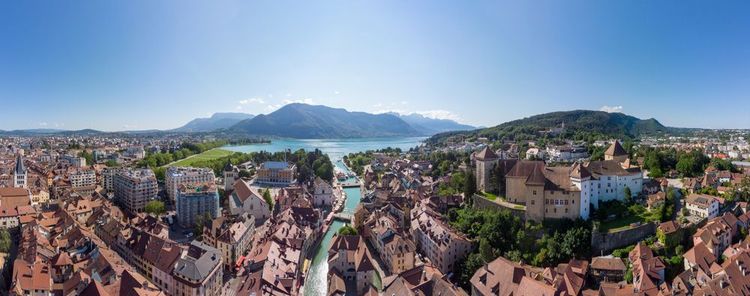Ave Maria, a controversial tradition
Every Carnival on 2 February, 12 of the poorest and prettiest girls were chosen and married off. The dowry was paid by the Venetian government. One day, brigands burst in and stole the brides. Today, the Festival of the Brides celebrates their liberation with a grand parade.
Colourful costumes and mysterious masks
For 10 days, thousands of costumes, each more sumptuous than the last, invade the town, the most famous being the "bauta" and the "Moretta". Other disguises are often borrowed from characters from the "Commedia dell'arte".
- Harlequin
- Trousers
- Colombine
- etc.
The carnival emblem, the Bauta
The bauta is the iconic carnival mask. It's a white mask with a long nose, framed by a black hat with three points, all protected by a black cloak that reaches halfway down the torso. It's a mask much used by the Venetians during Carnival.
The Moretta, the mask that makes you mute
The moretta is a small, round, black mask, very popular with women. This mask is mute, as a small button is placed in the mouth to hold it in place.
